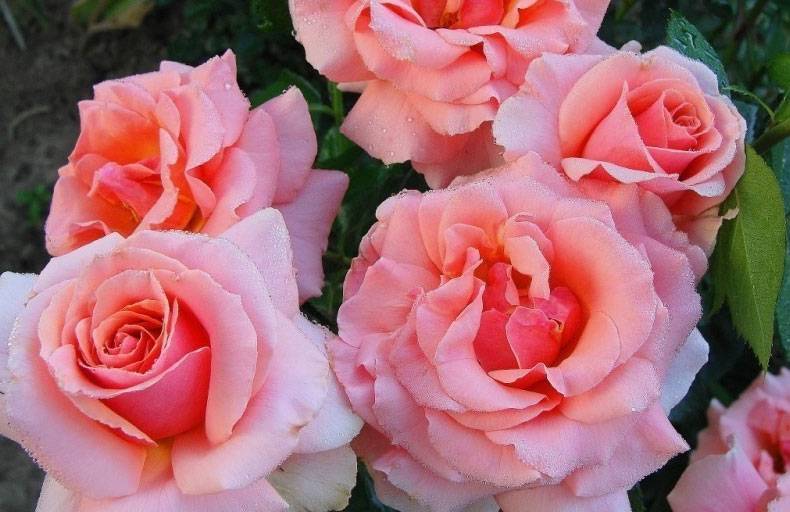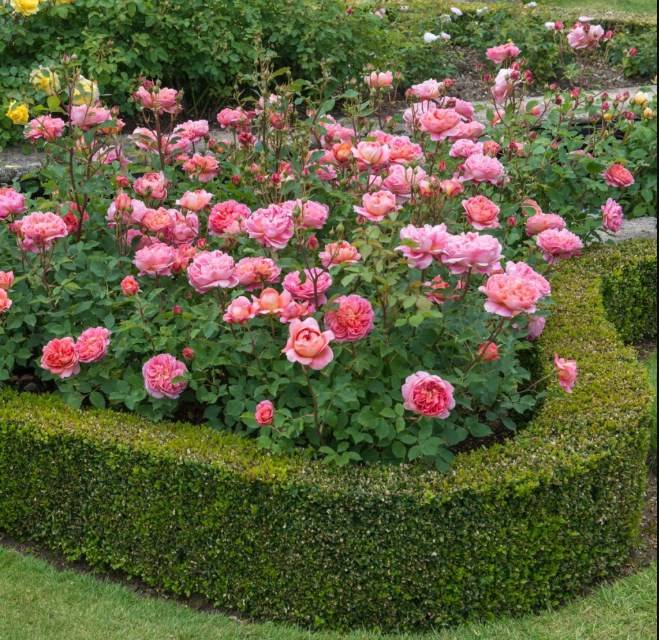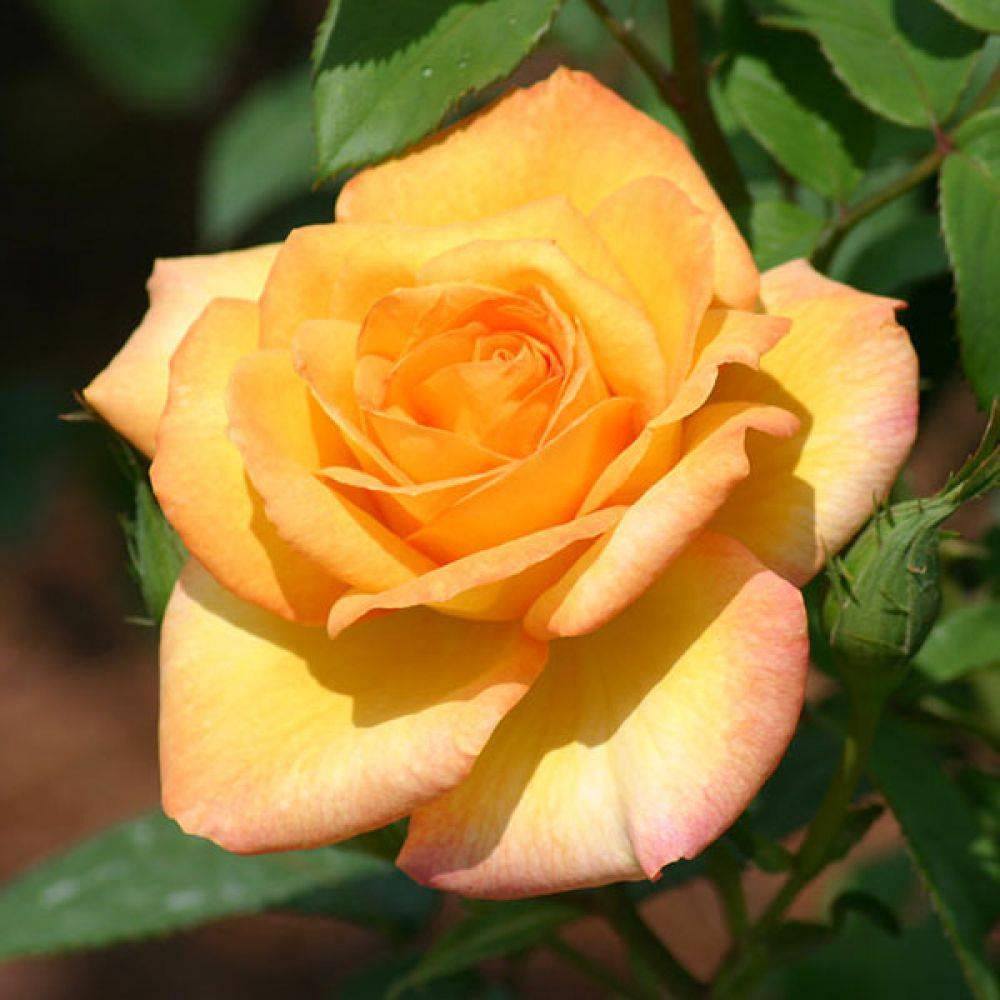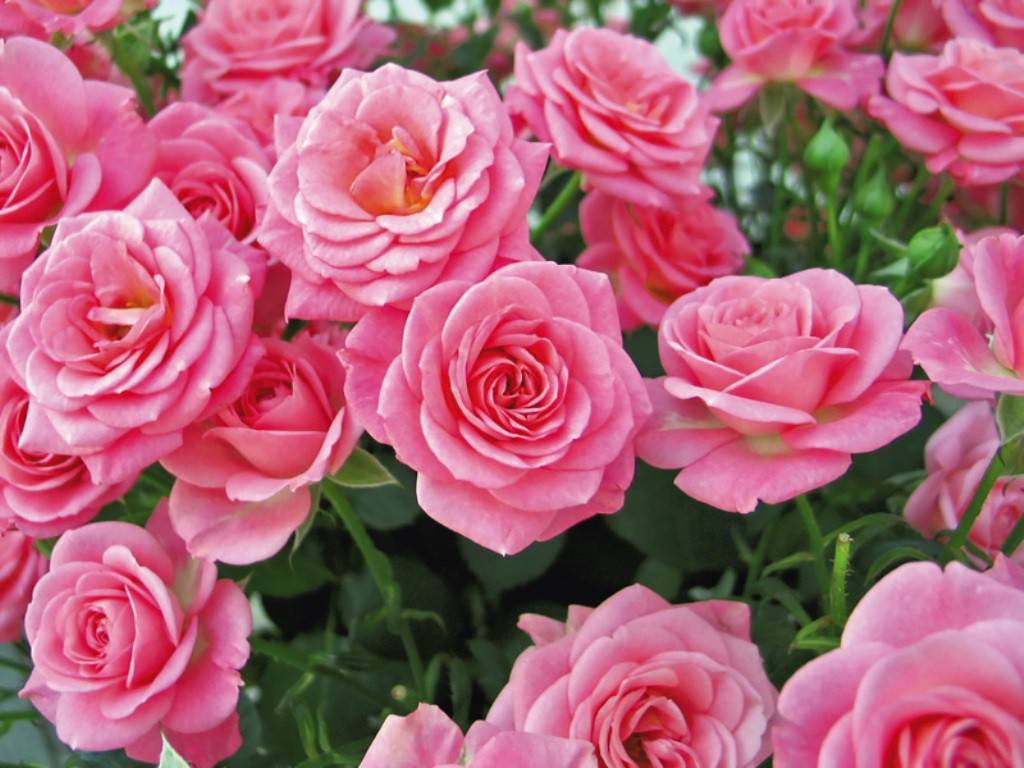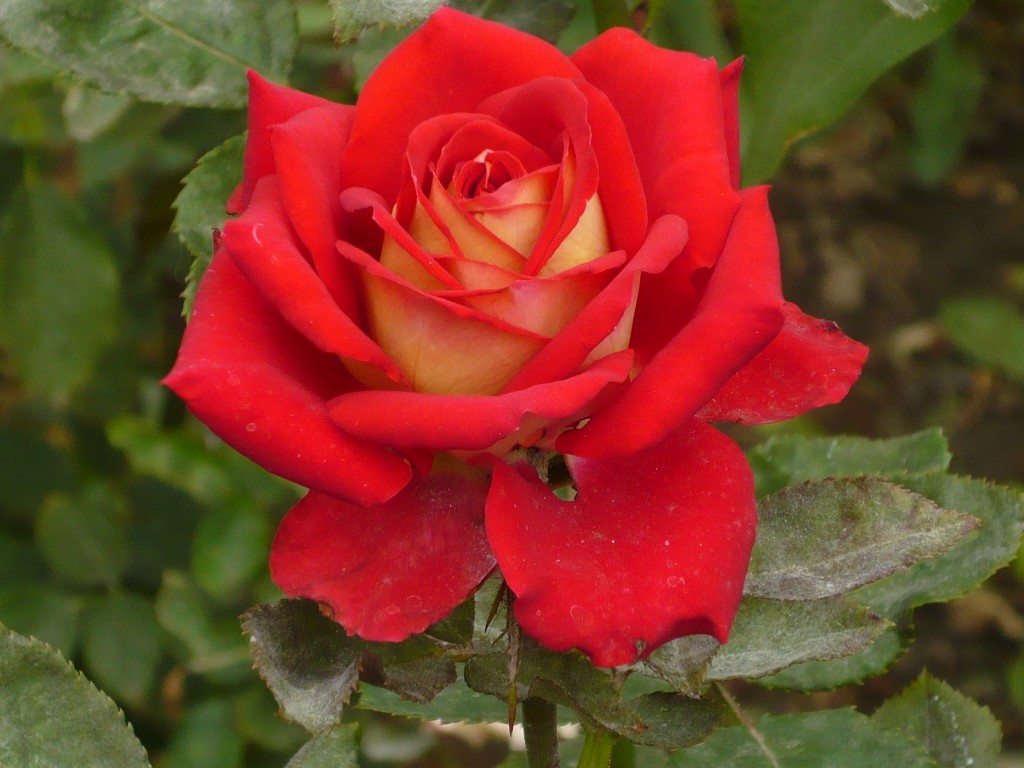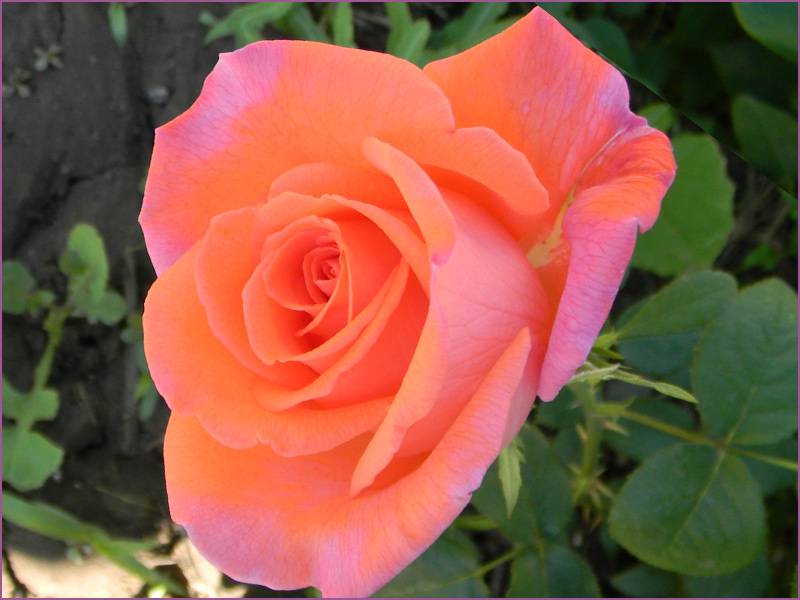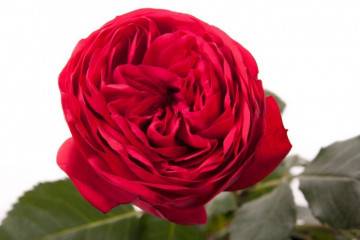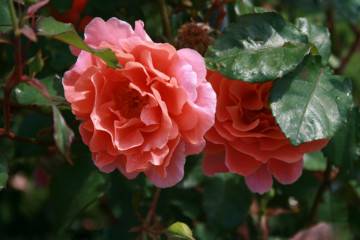Rose of grandiflora (Grandiflora)
Content:
Some floribunda roses in abundance are proudly named Grandiflora. Their characteristic feature is especially large flowers. These varieties, and there are many of them in the group, are unpretentious in care and cultivation, even a novice agronomist can cope with this. The main thing is to follow the recommendations of specialists regarding planting.
Rose Grandiflora (Grandiflora) - what kind of garden group
The varieties were bred in 1954 by the breeder and biologist V. Lammerts by crossing the pink floribunda group and the hybrid tea Charlotte Armstrong.
The Queen Elizabeth form is considered to be the ancestor of the grandiflora varieties.
Brief description and characteristics
It is not difficult to answer what this is a rose of grandiflora. Roses of grandiflora are sprawling powerful bushes, the height of which can reach two meters. Erect shoots are covered with a large amount of foliage, there are sharp thorns.
The leaves are ovoid, their color is dark emerald, there are jagged edges along the edges. Each loose inflorescence includes no more than 5 buds. Each bud contains approximately 40 petals. The diameter of each inflorescence reaches 15 cm.
Inflorescences can be red, pink or white.
Advantages and disadvantages of varieties
This group is very popular due to the large number of advantageous features that undoubtedly outweigh the number of disadvantages.
The main advantages of the species:
- with proper care, plants are hardy to resist the attacks of pests and pathogenic microorganisms;
- bushes grow and develop rapidly;
- moderate indicators are frost-resistant (plants are able to survive small frosts);
- bloom magnificently.
As for the shortcomings, they highlight the need to strictly follow the care recommendations, otherwise the roses may not bloom.
Use in landscape design
Landscape designers use Grandiflora in different ways.
Typically, tall bushes are planted in the background of flower beds or along fences. Also, bushes can act as a separate tapeworm or hedge.
Stamp forms of grandiflora
This group includes several large-flowered varieties. Among the best varieties of grandiflora, the following cultivated plants are distinguished.
Gold Medal
Picture 3. Gold Medal
An adult bush of this variety is capable of reaching a height of no more than 80 cm, exceptions are rare, and the deviations are minor. The Gold Medal (as the name is translated) blooms with large-sized flowers of a golden yellow color, the diameter of each is approximately 11 cm.
Flowering, subject to all the rules of care, lasts about three months, that is, all summer.
Love
This variety has an unusual petal color. They combine shades of red and silver. The flowering culture is abundant and lush. Most of the leaf blades are covered with densely double inflorescences.
The diameter of each reaches 14 cm.
Queen elizabeth
This is the ancestor of the family. The height of the bush can reach 110-120 cm. The shape of the bushes is spreading, the shoots are abundantly covered with cup-shaped buds.The diameter of each flower ranges from 8-13 cm.
As the buds open, their cupped shape transforms into a flat-cupped shape. The plant blooms throughout the summer, of course, subject to the rules of care. It emits a pleasant, but not intense aroma.
Komsomolsky light
A characteristic feature of the Komsomolsk fire is the formation of bright red velvet inflorescences during flowering, which are filled with gold in the central part. The diameter of the opened flowers, as a rule, exceeds 12-13 cm.
In landscape design, the variety can be used in different ways, since it will decorate any site with its beauty. The height of an adult bush can also exceed 120 cm.
Sonya
The full name of the variety is Sonia Meilland. A characteristic feature of the bushes is the presence of incredibly tough and erect shoots.
The height of an adult bush can reach 1.1 m. The petals of the inflorescences are painted in pink-coral tones. The flowers range in diameter from 9 to 11 cm. They exude a pleasant, subtle fruity aroma.
Growing varieties of the group: how to properly plant
The most suitable time for planting a plant is the first half of May, when the probability of frost is already low. The place should be well lit.
Before planting, you need to prepare the soil by enriching it with complex mineral fertilizers, wood ash, sand and peat.
Algorithm for planting grandiflora:
- Dig a hole about 50-60 cm deep in the selected area.
- The root system of the seedling is preliminarily placed in a container with a clay mixture and a mullein.
- Then the seedling is placed in the hole, carefully leveling the root system of the plant. The root collar is buried 5 cm below the soil surface.
- The pit is covered with the prepared mixture and watered abundantly.
At the end, the periosteal circle is necessarily mulched with a layer of needles or sawdust.
Care
In order for the plant to bloom and not fade at the same time, it needs to be watered regularly. In the summer months, the optimal frequency is 1 time per week, 25 liters. If it rains, there is no need for watering.
After watering, the soil is loosened and weeds are removed. To give the bush the correct shape, it must be cut regularly. You need to carry out the procedure with a sharpened knife.
As for wintering, they begin to prepare the bushes for it already at the beginning of October. They need to be cleaned of dried flowers, buds and foliage, and carefully spud. Press the shoots to the soil surface and cover with polyethylene fiber and a layer of spruce branches, wooden boards.
Blooming rose
A healthy bush begins to bloom, usually in mid-June, and continues until autumn. If this does not happen, there may be several reasons:
- defeat by diseases;
- incorrect pruning;
- lack of dressing;
- poorly chosen landing site.
Correct identification of the cause will allow you to adjust the care.
Flower propagation
There are two ways to propagate the Grandiflora rose:
- dividing the bush;
- grafting.
To implement the first method, you will need to dig up the plant and divide the root system into several parts with a sharp shovel. In the second case, you will have to root the cuttings.
Diseases, pests and ways to control them
Rose grandiflora is resistant to most diseases and pests, but if the rules of care are not followed, the culture can be affected by powdery mildew or black spot. In the first case, the bush must be treated with foundation or phytosporin as soon as possible, in the second case, spray with ridomil gold or profit.
Among the dangerous pests, the spider mite and the rose leafworm are noted.In case of defeat, it is recommended to use fufanon and spark.
Grandiflora is an amazingly beautiful plant that will harmoniously fit into any landscape design. There are not so many agricultural rules, so everyone can grow flowering bushes on their personal plot.
